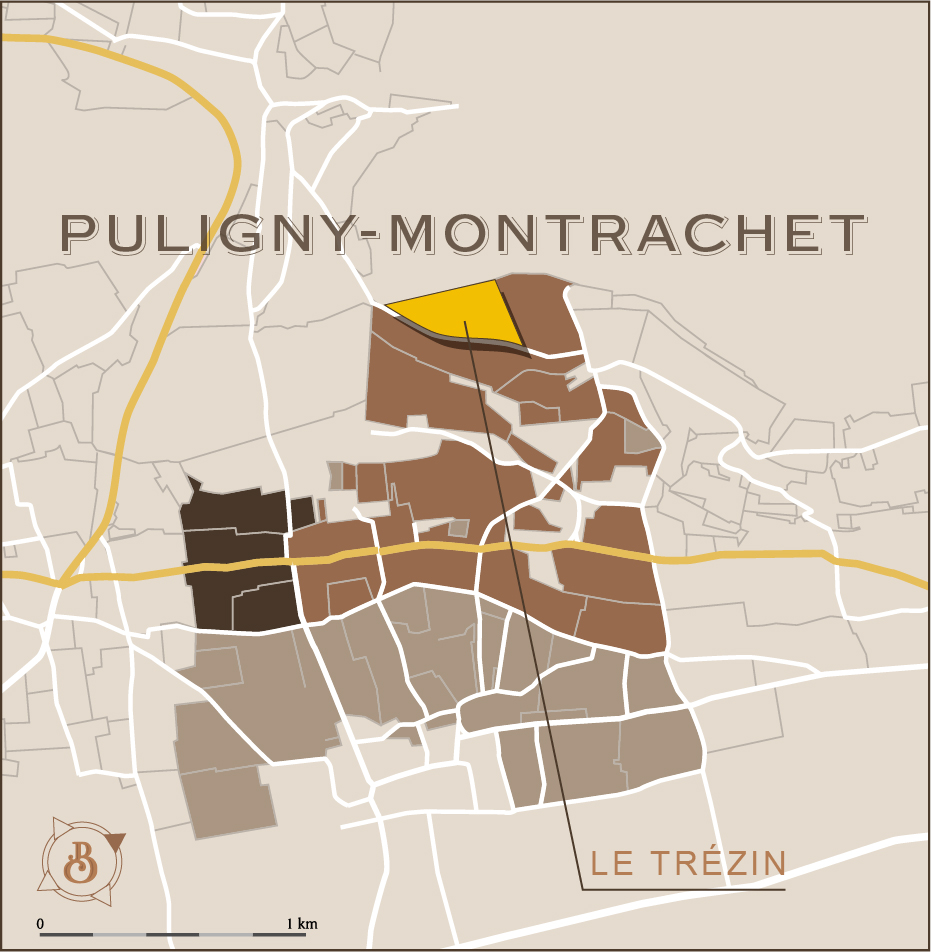Puligny-Montrachet
Le Trézin 2017
One area in the central Côte de Beaune is devoted to the production of Burgundy’s great white wines including Puligny-Montrachet which is incontestably one of its most glorious examples…
Origin
Puligny’s soil is almost exclusively given over to the cultivation of Chardonnay grapes. The word “terroir” rarely carries the importance it does here; a difference of just a few metres is sufficient to create various nuances in the wines.
In the northern part of the appellation, just bordering on Saint-Aubin, the climat "Le Trezin" is located at the top of the hill, in a cool area.
Its name refers to a nearby spring or stream.
Viticulture
Grape variety: chardonnay
Soils: limestone brown on source rock.
Orientation: South/East
Surface area under vine: 0.2941 ha
Pruning: Guyot system
Yield: 56 hL/ha
Average age of the vine: 40 years old.
Vinification
Harvest date: 10 September 2017.
The grapes were handpicked and were sorted a first time in the vineyard and a second time when they arrived at the winery.
At the winery: The whole bunches of grapes were gently pressed for 2½ hours. The temperature of the must was brought down to 12°C then was immediately transferred to barrels of 450L with no settling to preserve a maximum of lees. Long fermentation (up to 10 months!) using indigenous yeasts for added complexity and freshness.
Ageing
Maturation: aged for 14 months with no racking or stirring to bring out all of this wine’s minerality. 30% new French oak barrels.
Barrels: Oak of French origin toasted at low temperatures for a long time to impart a subtle, delicate touch of oak were used.
Bottling
Bottling: The wine was bentonite fined and very gently filtered before being bottled using gravity in January 2019.
Number of bottles: 1,600.
Vintage
2017, finesse
The growing cycle was thrown off-kilter by a very cold winter, late spring frost, then optimal conditions for rapid flowering, sporadic hail, and summer drought. Harvesting began in early September in the sun, and after several lean years, the vines finally produced abundant grapes, although with significant differences in maturity between whites and reds and from one region to another, which called for strict sorting.
Ageing potential: from 5 to 8 years.
Tasting notes
The color is pale yellow with white reflections. The very elegant nose will seduce you with its aromas of flowers and white fruits, associated with some buttery notes. On the palate, the wine is very fine in a refined style and offers a tangy frame.



